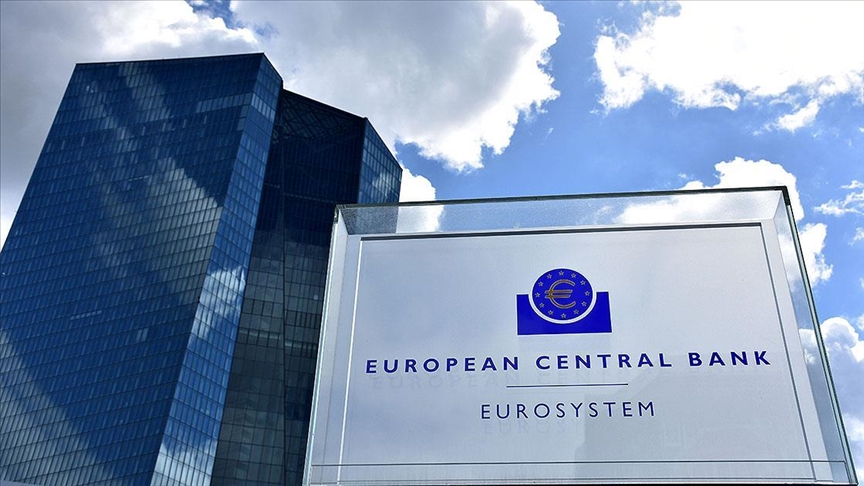BERLIN
The European Central Bank (ECB) is expected to cut its benchmark interest rates for the first time in five years on Thursday when it will announce its decision, as the inflation in the eurozone is shadowed by the weak economic growth outlook.
The ECB’s Governing Council is certain to cut refinancing, deposit, and marginal funding rates by 25 points to 4.25%, 3.75%, and 4.50%, respectively, marking it the first cut since March 2016 for refinancing and marginal funding rates, and since September 2019 for the deposit rate.
ECB President Christine Lagarde stated that more clarity and sufficient data will be obtained until June after the Governing Council members highlighted the need to take action to cut interest rates before the Fed.
The annual inflation in the eurozone peaked at 10.6% in October 2022, and fell to 2.6% in May, which is not far from the ECB’s 2% target.
The high energy costs stemmed from the ongoing Russia-Ukraine war, triggering the first surge in inflation.
The ECB expects less price pressure in the short- to medium-term, while estimating significantly weaker growth, according to the bank’s latest macroeconomic forecasts, as it predicts a 0.4% decrease in inflation to 2.3% for 2025, and 1.9% inflation for 2026.
Weak economic growth worries ECB more than inflation
The ECB reduced its estimates for the economic growth of the eurozone from 0.8% to 0.6% for 2024, but left estimates for 2025 and 2026 unchanged, at 1.5% and 1.6%, respectively.
The bank forecasts for the core inflation rate, excluding food and energy, declined from 2.7% to 2.6% for 2024, from 2.3% to 2.1% in 2025, and it stayed at 2% for 2026.
The ECB raised its interest rates to combat high inflation a total of 450 basis points in 10 consecutive meetings since July 2022, and it raised its deposit rate to 4% at its September 2023 meeting, keeping it unchanged at the meetings of October, December, January, March, and April.
The Fed started raising its rates in March 2022, four months before the ECB, when the global economy was recovering from the pandemic and inflation was on the rise, and currently, the Fed has yet to make a decision for a rate cut, and the ECB has a chance to lead by making the first cut.
A possible rate cut on Thursday is expected to boost corporate earnings and positively impact stock prices, and as nominal rates will remain above the current inflation rate, a 25-basis point rate cut will also maintain positive real interest rates.
The eurozone’s economy shrank 0.1% in both the third and fourth quarters of 2023, and the region saw a growth of 0.3% in the January-March 2024 period.
No continued rate cuts on horizon
ECB President Lagarde said on March 20 that the bank will probably have enough assurance to decide on the first rate cut in June of this year, though she made no promises for continued rate cuts.
Similarly, Joachim Nagel, president of Bundesbank and the ECB’s Governing Council member, stated that inflation can be stubborn, and that the ECB cannot commit to what could happen after the first possible cut.
The ECB is now faced with the risks of cutting interests too much or too little, as the cyclical recovery in economic activity in the region, as well as structural labor shortage and upward pressure on wages, could put the bank’s inflation projections at risk, analysts say.
So long as the ECB continues its restrictive monetary policy for too long, and cuts rates less than market expectations, it risks depressing economic growth.
ECB can cut rates only because it can, not because it needs to
Carsten Brzeski, ING Germany’s chief economist, said the ECB certainly will cut its interest rates, and anything other than a 25-basis point cut on Thursday would be a serious loss of reputation for the bank.
Brzeski highlighted that the past rate cut cycles were often triggered by recession or a crisis, neither of which is what is experienced in the region, therefore, the bank can cut rates only because it can, and not because it needs to.
He said the recent improvements in economic confidence indicators, the upward movement of inflation, and the rise in wages could hinder a rate-cut decision.

